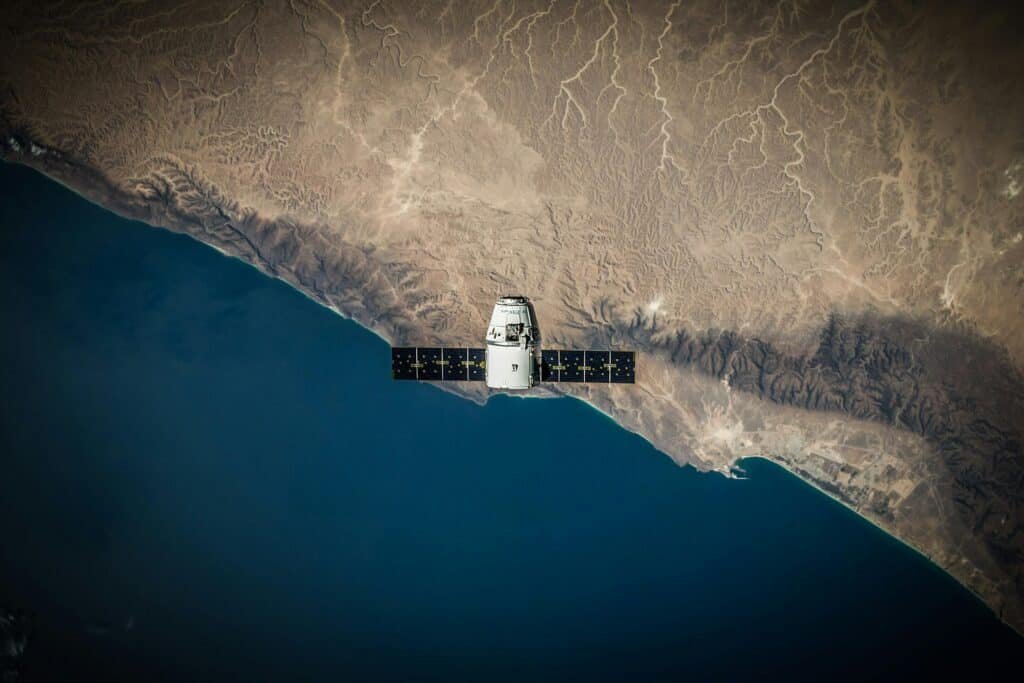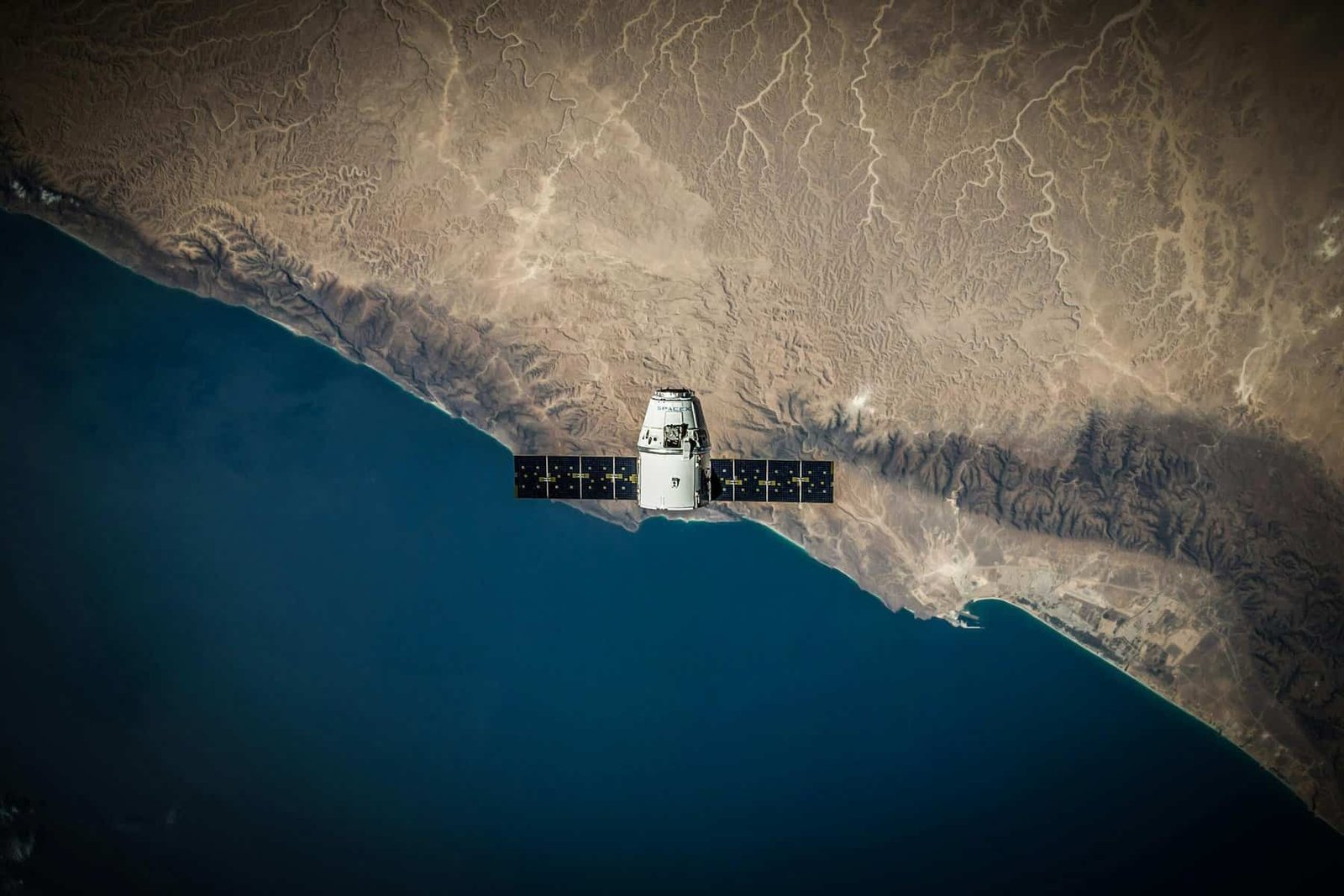The communication that takes place between Earth and spacecraft in deep space is dependent on a variety of technologies and protocols in order to guarantee the delivery of data in a trusted and effective manner. The following are some important factors to take into consideration.
Radio Frequency (RF) Communication:
The majority of deep space missions rely on RF communication to transmit and receive data between Earth and spacecraft. Radio frequency (RF) transmissions are comprised of electromagnetic waves that move at the speed of light and are capable of being broadcast over extensive distances. Typically, the signals are transmitted using massive dish antennas located on Earth, which are referred to as ground stations. The signals are then received by antennas that are located onboard the spacecraft. In order to facilitate various kinds of communications, such as command and control, telemetry, and scientific data, various frequencies, bands, and modulation techniques are utilised.

The Deep Space Network (DSN) is a global network of ground stations that is operated by the National Aeronautics and Space Administration (NASA). Its primary purpose is to offer communication and tracking support for space missions that are beyond outer space orbit. For the purpose of providing uninterrupted coverage of deep space missions, the Deep Space Network (DSN) is comprised of three facilities that are located in different parts of the world: California, Spain, and Australia. The DSN antennas, which can range in diameter from 34 metres to 70 metres, are able to send and receive signals over extremely long distances. Their sizes range from 34 metres to 70 metres.
Deep space communications face a number of obstacles, including signal degradation as a result of distance and atmospheric interference. Error correction and data compression are two of these challenges. Error correction methods, such as Reed-Solomon coding, are utilised in order to identify and rectify faults that may be present in the data that is being communicated. The size of the data packets that are transmitted between Earth and spacecraft can be reduced by the utilisation of data compression methods, such as the CCSDS File Delivery Protocol (CFDP), which helps to maximise the utilisation of available bandwidth.
Relay Networks for Spacecraft:
In certain circumstances, spacecraft that are located in deep space may rely on relay networks. These networks involve numerous spacecraft cooperating with one another to transmit data from one spacecraft to another or to a ground station. In order to transmit data between surface rovers and Earth, for instance, the Mars Relay Network makes use of orbiters such as the Mars Reconnaissance Orbiter (MRO) and the Mars Odyssey, both of which are operated by NASA.
Optical Communication:
Optical communication, commonly referred to as laser communication or lasercom, is a developing technology that is increasingly being utilised for communication in deep space. Through the employment of laser beams, optical communication allows for the transmission of data between spacecraft and the Earth. When compared to radio frequency (RF) transmission, optical communication provides not only better data rates but also the possibility of lower power usage. Examples of optical communication experiments and missions include the European Data Relay System (EDRS), developed by the European Space Agency, and the Lunar Laser Communication Demonstration (LLCD), conducted by the National Aeronautics and Space Administration.
Due to the great distance that separates Earth and the spacecraft, deep space missions frequently encounter lengthy communication delays. Delay-Tolerant Networking (DTN) refers to this phenomenon. The Consultative Committee for Space Data Systems (CCSDS) Bundle Protocol is an example of a delay-tolerant networking (DTN) protocol. These protocols are designed to deal with extended delays and sporadic connectivity without compromising their functionality. DTN protocols employ store-and-forward techniques to transfer data in segments, which enables communication to continue even in the event that the connection is briefly broken.
Cross-Support:
Cross-support is a concept that relates to the sharing of ground station resources and expertise among several space organisations and missions. Other terms for this concept include “cross-support.” It is possible, for instance, that the DSN owned and operated by NASA will offer communication support to foreign space missions and vice versa. This collaboration serves to maximise the effectiveness of ground station utilisation and guarantees that space missions receive sufficient assistance for communication.
To summarise, in order to overcome the problems of distance, signal degradation, and intermittent connectivity, communication between Earth and spacecraft deployed in deep space necessitates the utilisation of a variety of technologies and protocols. The Deep Space Network, radio frequency (RF) transmission, error correction, data compression, optical communication, delay-tolerant networking, and cross-support are all vital components of deep space communication systems. Another crucial component is cross-support. As technological advancements continue, new communication methods and protocols will be developed, which will further improve the effectiveness and dependability of communication in deep space.
Without a doubt!
Additional technologies and protocols that are utilised for communication between Earth and spacecraft are as follows, with a particular emphasis on how these technologies and protocols enable more efficient and reliable data transmission:
Automatic Repeat reQuest, often known as ARQ, is a form of error control that is utilised in digital communication systems to guarantee the integrity of transmission data. Data packets that are lost or damaged during transmission are automatically resent by the system in order to ensure that it functions properly. Go-Back-N and Selective Repeat are two examples of ARQ protocols that are utilised in deep space communication for the purpose of recovering lost data packets and ensuring that data integrity is preserved.
Forward Error Correction (FEC) is a method that can detect and fix faults in data that has been transmitted without the need for the data to be retransmitted. The data that is being communicated is supplemented by redundant information, which enables the receiver to identify and rectify any errors that may have occurred. Deep space communication makes use of FEC in order to enhance the dependability of data transmission and decrease the number of times that retransmissions are absolutely necessary.
Link Budget Analysis:
A calculation that is used to determine the signal-to-noise ratio (SNR) of a communication link is referred to as link budget analysis. When calculating the maximum range of the communication link, it takes into account a number of different elements, including the power of the transmitter, the sensitivity of the receiver, the gain of the antenna, and the path loss. In the field of deep space communication, link budget analysis is utilised in order to build communication systems that are capable of functioning over extensive distances while preserving the reliability of data transmission.
Coding and modulation schemes, often known as MCS, are utilised in digital communication systems for the purpose of encoding data in preparation for its transmission via a communication channel. MCS are optimised for various communication circumstances, based on characteristics such as data rate, bandwidth, and signal-to-noise ratio. These factors are taken into consideration when designing MCS. For the purpose of optimising data transmission and improving the reliability of communication networks, MCS are utilised in the field of deep space communication.
SDR stands for software-defined radio, which refers to a communication system that employs software to carry out the functions that are typically carried out by a radio that is based on hardware. Different modulation schemes and protocols can be easily implemented and adjusted in software, which enables better flexibility and adaptability in communication systems. Therefore, it enables higher flexibility and adaptability. For the purpose of supporting a wide variety of communication protocols and standards, SDR is utilised in the field of deep space communication.
Cross-Layer Optimisation:
Cross-layer optimisation is a method that is utilised in communication systems to enhance performance by optimising the interactions that occur between the various layers of the communication protocol stack. To achieve the highest possible data throughput and dependability, it is necessary to optimise multiple factors simultaneously, including the modulation scheme, the coding rate, and the power allocation. In deep space communication, cross-layer optimisation is utilised to optimise data transmission and adapt to changing communication conditions. This allows for more efficient communication.
An example of a technology that is used in digital communication systems is known as adaptive coding and modulation (ACM). This approach is used to dynamically modify the coding and modulation scheme depending on the characteristics of the channel. Because the system is able to adjust to different channel circumstances, it makes it possible to make more effective use of the communication channel when it is used. Deep space communication makes use of ACM in order to maximise the efficiency of data transmission and to ensure that communication links remain trustworthy.
In a nutshell,
the transmission of data in deep space is accomplished through the use of a variety of technologies and protocols in order to guarantee its dependability and effectiveness. In order to overcome the difficulties associated with long-distance communication and to establish dependable communication links between Earth and spacecraft, these technologies and protocols, which include ARQ, FEC, link budget analysis, MCS, SDR, cross-layer optimisation, and ACM, collaborate with one another.

